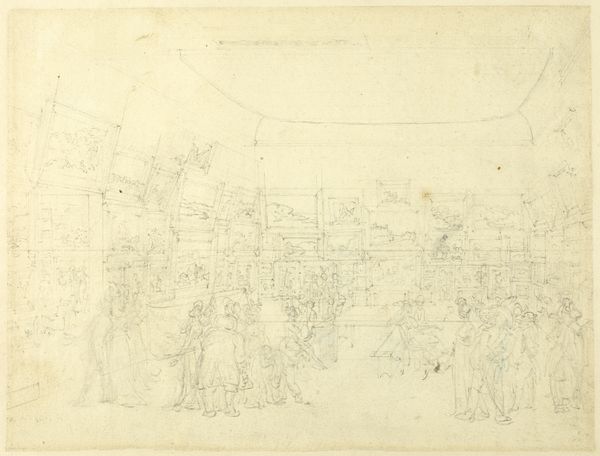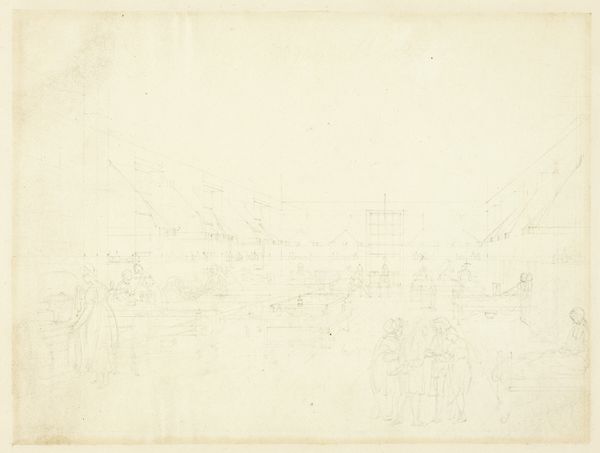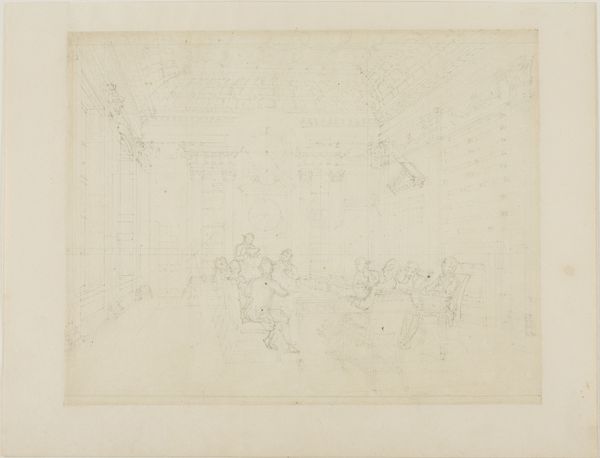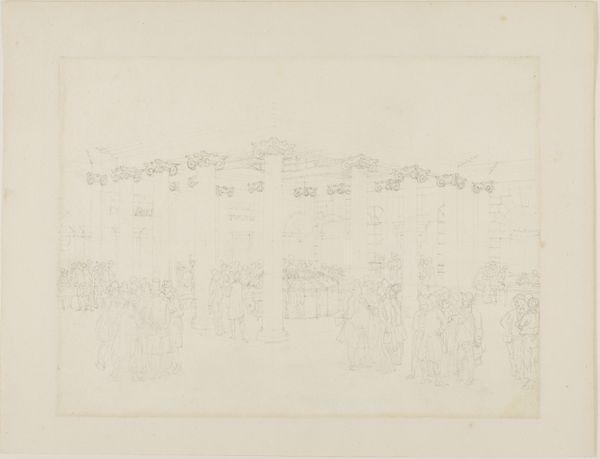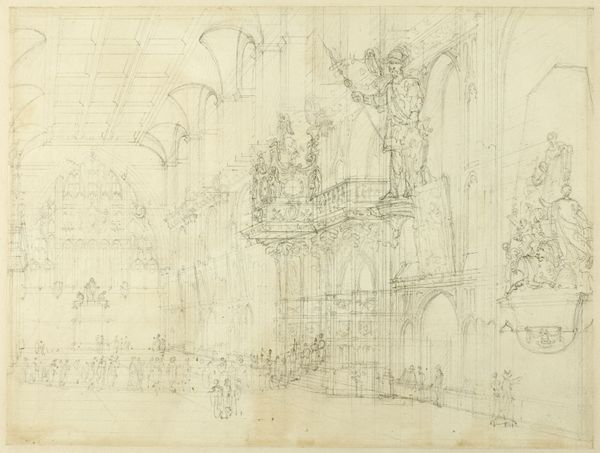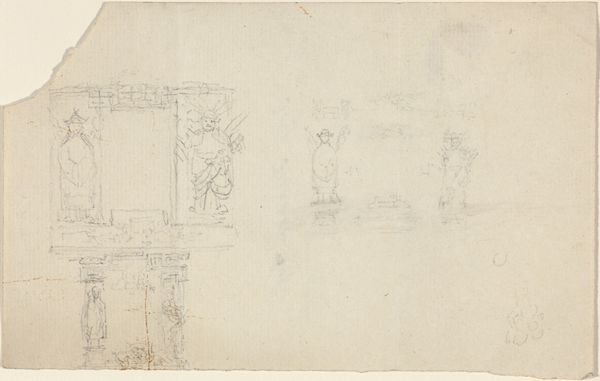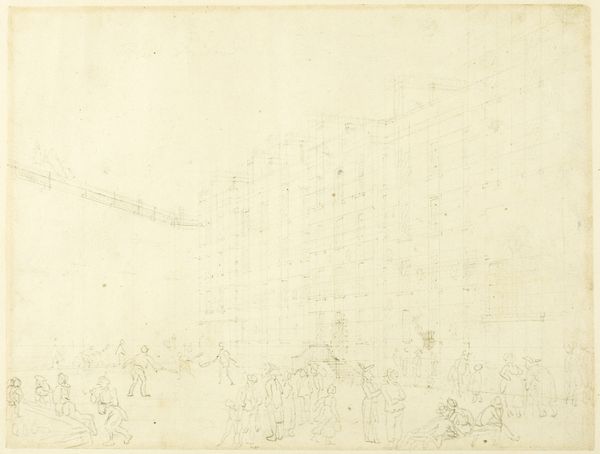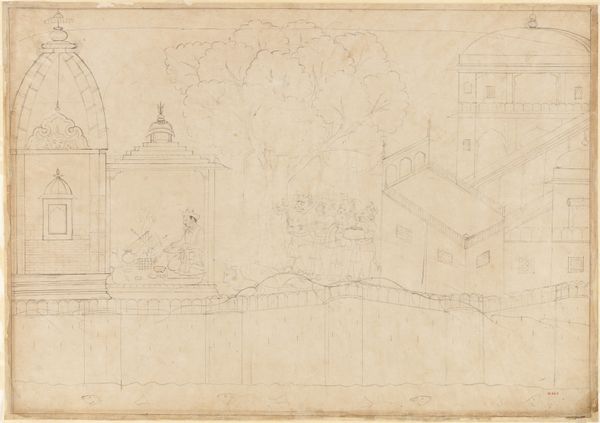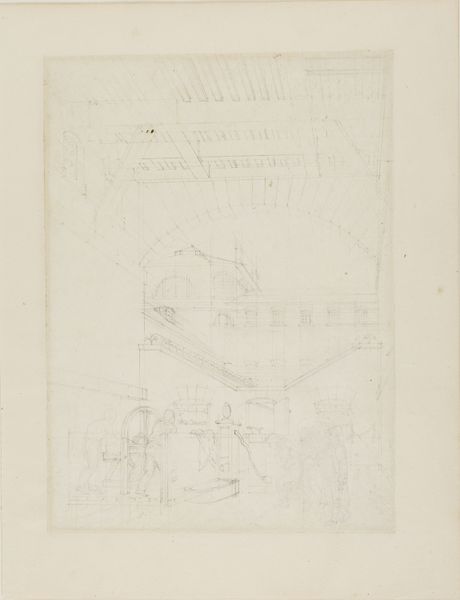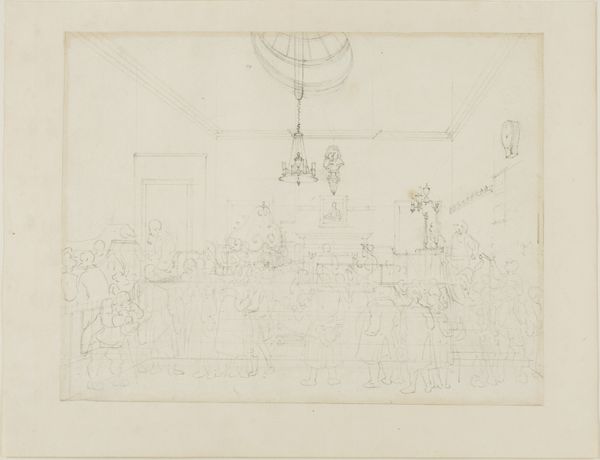
Study for Chapel of Newgate, from Microcosm of London c. 1809
0:00
0:00
drawing, print, paper, graphite
#
drawing
# print
#
paper
#
romanticism
#
line
#
graphite
#
cityscape
#
history-painting
Dimensions: 202 × 258 mm
Copyright: Public Domain
Curator: This is Augustus Charles Pugin’s "Study for Chapel of Newgate, from Microcosm of London," created around 1809. It's a drawing and print, rendered in graphite on paper. Editor: It has a ghostly, ethereal quality to it. All those pale lines suggesting figures and architecture... it feels unfinished, somehow caught between intention and realization. Curator: I find the process so intriguing. Pugin was meticulous in documenting London's structures, but here, we see a glimpse behind the curtain, so to speak. The underdrawing and layering of graphite reveal his methodology, a blend of technical skill and artistic vision. What about the social context? Newgate Prison itself held a dark place in the city's imagination. Editor: Absolutely. Newgate represented the brutal reality of the justice system, the social control exerted over the populace. The chapel within, intended for the rehabilitation of prisoners, is a poignant contrast. A grand yet stark reminder of the power structures at play and, ultimately, its social impact. The romanticism style he employed to depict such a scene feels... deliberate. Curator: Exactly. And consider the “Microcosm of London” series it was a part of. The publishers, Ackermann, pushed for accessible representations of London life to cater to the booming middle class, who then consumed images and ideas about their society and its systems. Pugin, in documenting this space, inadvertently participated in constructing that social gaze. Editor: So the medium itself, the print, played a role in disseminating these ideas and perpetuating existing social narratives about crime, punishment, and redemption within 19th-century London. Interesting how an aesthetic style became implicated in very real political messaging through mass culture. Curator: Indeed. By carefully attending to materials and means of reproduction, we begin to understand Pugin's intentions and cultural relevance. This work helps reveal what might have otherwise been glossed over. Editor: For me, seeing it in this stripped-down state forces a reflection on the roles that prisons occupied. Perhaps even sparking an introspection about the narratives we inherit and the images we perpetuate.
Comments
No comments
Be the first to comment and join the conversation on the ultimate creative platform.

